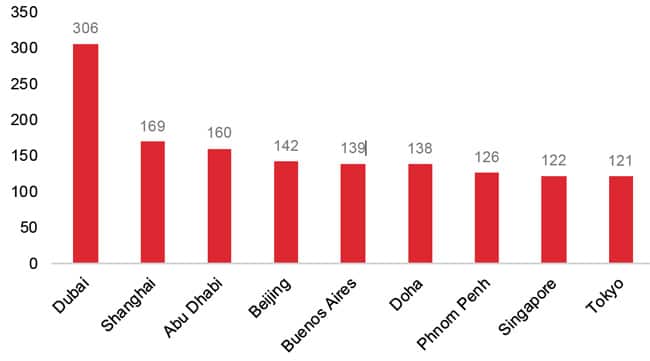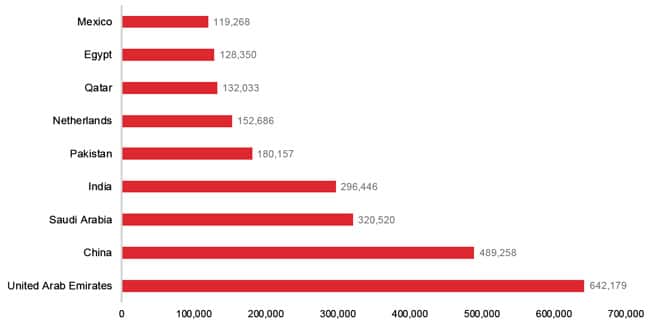Annual survey finds continued growth in international schools
The latest edition of an annual global study reveals ongoing growth in the international schools sector, both in terms of the number of schools and with respect to enrolment.
The 2018 Global Report on the International Schools Market from ISC Research counts a total of 9,605 English-medium international schools worldwide. This represents a year-over-year increase of 6.3%, and contributes to a compound annual growth rate of nearly 6% over the last five years. ISC defines the segment as follows, “These schools, for children aged between 3 and 18, offer an international curriculum or a curriculum other than the country’s national curriculum (often the National Curriculum of England or an American style of curriculum). Most are entirely English-speaking, others are bilingual with English as one of the main languages of learning.”
The locations with the greatest number of international schools are summarised in the chart below, with Dubai and its 306 leading the way (followed at some distance by Shanghai, Abu Dhabi, and Beijing – each with between 140 and 170 schools).

Enrolment growth
Along with an expanding field of school choice, the number of students enrolled in international schools has also continued to grow this year. ISC reports 7% growth in enrolment year-over-year, taking the total student population to 5.1 million worldwide (on a compound annual growth rate of just under 7% over the past five years).
As the following chart reflects, roughly a third of this total enrolment is concentrated in four markets: the UAE, China, Saudi Arabia, and India.

Indicator for global mobility
The significance of this continuing rapid expansion of international schools extends well beyond the sector itself. As ISC puts it, “Approximately 20% of [international school] students are the children of expatriate families who are seeking a school offering the language of learning and curriculum from their home country. However, the vast majority of international school students today are the children of local families choosing, what they consider to be, the best possible education close to home to prepare their child for university overseas and global careers.” Thus, the growing population of students in the sector also represents an important – and expanding – pool of well-qualified applicants for higher education institutions abroad. For additional background, please see:
















